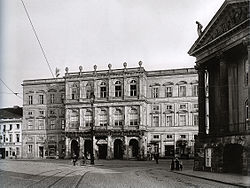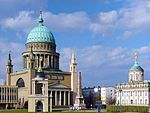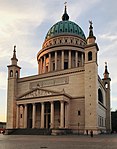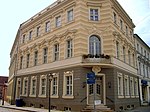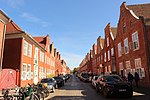Museum Barberini

The Museum Barberini is an art museum in Potsdam opened in 2017. Its exhibitions range from the so-called Old Masters to contemporary art, with an emphasis on impressionist painting. Centered around works from the collection of its founder and patron Hasso Plattner, the Barberini presents three temporary exhibitions per year, featuring loans from international museums and private collections. Academic conferences serve to prepare these exhibitions. At the same time, shorter gallery displays – the so-called “art histories” – put works from the collection into constantly shifting contexts. The museum aims to offer a diverse programme of events and educational activities as well as digital offers like the Barberini App and the 4K Smart Wall in the museum. The director of the Museum Barberini is Ortrud Westheider.
Excerpt from the Wikipedia article Museum Barberini (License: CC BY-SA 3.0, Authors, Images).Museum Barberini
Humboldtstraße, Potsdam Historische Innenstadt
Geographical coordinates (GPS) Address External links Nearby Places Show on map
Geographical coordinates (GPS)
| Latitude | Longitude |
|---|---|
| N 52.395169 ° | E 13.062282 ° |
Address
Museum Barberini
Humboldtstraße 5-6
14467 Potsdam, Historische Innenstadt
Brandenburg, Germany
Open on Google Maps
